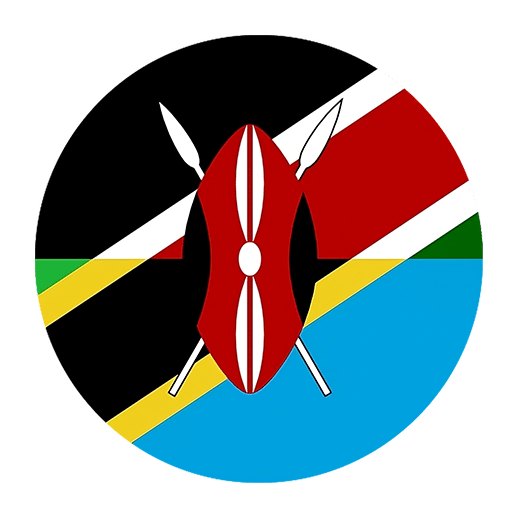Learning a new language can be an exciting journey, and Swahili is no exception. As the lingua franca of East Africa, Swahili is spoken by millions of people across countries like Kenya, Tanzania, Uganda, and the Democratic Republic of Congo. One of the most effective ways to learn Swahili, or any language for that matter, is through the use of flashcards. Flashcards are a versatile and powerful tool that can help you memorize vocabulary, practice grammar, and even improve your pronunciation. In this article, we will explore how to use flashcards to learn Swahili effectively.
Why Use Flashcards?
Flashcards are a tried and tested method for language learning for several reasons:
1. **Active Recall:** Flashcards force you to actively recall information, which strengthens your memory and helps you retain the vocabulary longer.
2. **Spaced Repetition:** Flashcards can be used with spaced repetition software (SRS) like Anki or Quizlet, which schedules reviews at optimal intervals to enhance retention.
3. **Portability:** Flashcards can be physical cards that you carry around or digital ones on your smartphone, making it easy to study anywhere and anytime.
4. **Customizability:** You can create flashcards tailored to your learning needs, focusing on areas where you need the most practice.
Creating Effective Flashcards
Creating your flashcards can be as simple or as complex as you want. Here are some tips to make your flashcards as effective as possible:
1. Start with Basic Vocabulary
Before diving into complex sentences or advanced grammar, start with basic vocabulary. Focus on common nouns, verbs, adjectives, and phrases that you are likely to use in everyday conversations.
– **Nouns:** Begin with everyday items like “kitabu” (book), “meza” (table), “simu” (phone).
– **Verbs:** Include common actions like “kula” (to eat), “kunywa” (to drink), “kwenda” (to go).
– **Adjectives:** Add descriptive words like “kubwa” (big), “nzuri” (good), “nyekundu” (red).
Example Flashcard:
– Front: “Kitabu”
– Back: “Book”
2. Use Images
Adding images to your flashcards can significantly improve retention. Visual aids help you form mental associations between the word and its meaning. For example, for the word “kitabu” (book), you can include a picture of a book on your flashcard.
Example Flashcard:
– Front: “Kitabu” with an image of a book
– Back: “Book”
3. Include Pronunciation Guides
Swahili pronunciation is generally straightforward, but it’s still important to get it right. Including a pronunciation guide or even an audio clip on your flashcards can help you learn how to say the words correctly.
Example Flashcard:
– Front: “Kitabu” [kee-tah-boo]
– Back: “Book”
4. Contextual Sentences
While individual words are essential, understanding how to use them in context is equally important. Create flashcards with simple sentences that use the vocabulary you’re learning.
Example Flashcard:
– Front: “Nina kitabu.”
– Back: “I have a book.”
5. Grammar Points
Flashcards can also be used to learn and review grammar points. For example, you can create cards that explain noun classes, verb conjugations, or sentence structures.
Example Flashcard:
– Front: “Noun Class M-WA: Mtu”
– Back: “Person/People”
Using Flashcards Effectively
Creating flashcards is just the first step. How you use them will determine your success in learning Swahili.
1. Regular Review
Consistency is key when it comes to language learning. Make it a habit to review your flashcards daily, even if it’s just for a few minutes. This regular exposure will help reinforce your memory.
2. Spaced Repetition
Using spaced repetition software (SRS) can optimize your study sessions. Apps like Anki or Quizlet space out the intervals at which you review each card based on how well you know it. This ensures that you spend more time on cards you find difficult and less time on those you already know well.
3. Active Recall
When using flashcards, try to recall the answer before flipping the card. This active recall process strengthens your memory and makes it easier to remember the information later.
4. Mix It Up
Variety can keep your study sessions interesting. Mix up your flashcards so that you’re not always reviewing them in the same order. This will help prevent you from simply memorizing the order of the cards rather than the content.
5. Speak Aloud
Whenever possible, say the words or sentences aloud. This practice will help improve your pronunciation and reinforce your memory through auditory learning.
Digital vs. Physical Flashcards
Both digital and physical flashcards have their pros and cons. Here’s a quick comparison to help you decide which is best for you:
Physical Flashcards
– **Pros:**
– Tactile experience can aid memory.
– No need for electronic devices.
– Can be customized easily with drawings or additional notes.
– **Cons:**
– Less convenient to carry around.
– No built-in spaced repetition.
Digital Flashcards
– **Pros:**
– Easily portable on smartphones and tablets.
– Can include audio clips for pronunciation.
– Built-in spaced repetition features.
– **Cons:**
– Requires a device and sometimes an internet connection.
– Less tactile experience.
Advanced Techniques
Once you’ve mastered the basics, you can use flashcards for more advanced aspects of Swahili.
1. Idiomatic Expressions
Learn common Swahili idioms and expressions. These can add depth to your language skills and help you sound more like a native speaker.
Example Flashcard:
– Front: “Haraka haraka haina baraka.”
– Back: “Haste makes waste.”
2. Cultural Context
Understanding cultural context can enhance your language learning experience. Create flashcards that explain cultural nuances, traditions, or historical facts related to Swahili-speaking countries.
Example Flashcard:
– Front: “Swahili Greeting: ‘Jambo!'”
– Back: “Hello! Used as a casual greeting.”
3. Complex Sentences
Challenge yourself with more complex sentences that incorporate multiple grammar points and vocabulary words you’ve learned.
Example Flashcard:
– Front: “Ninapenda kusoma vitabu vikubwa kwa sababu ni vya kuvutia.”
– Back: “I like reading big books because they are interesting.”
4. Listening and Speaking Practice
Use flashcards to practice listening and speaking skills. For example, you can create cards with audio clips of native speakers and try to mimic their pronunciation and intonation.
Resources for Swahili Flashcards
There are several resources available to help you create and study Swahili flashcards:
– **Anki:** A popular spaced repetition software that allows you to create custom flashcards with text, images, and audio.
– **Quizlet:** Another SRS platform that offers a wide range of pre-made flashcards and the ability to create your own.
– **Memrise:** Focuses on vocabulary building with a variety of multimedia flashcards.
– **Swahili Language Apps:** Apps like Duolingo and Babbel offer built-in flashcard features and structured lessons.
Conclusion
Flashcards are a powerful tool for learning Swahili, offering flexibility, portability, and the ability to focus on the areas where you need the most practice. By creating effective flashcards and using them consistently, you can build a strong foundation in Swahili vocabulary, grammar, and pronunciation. Whether you choose digital or physical flashcards, the key is to stay consistent and make your study sessions engaging and varied. With dedication and the right tools, you’ll be speaking Swahili confidently in no time.

